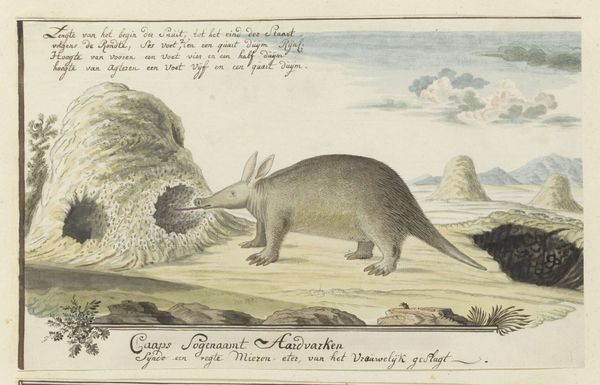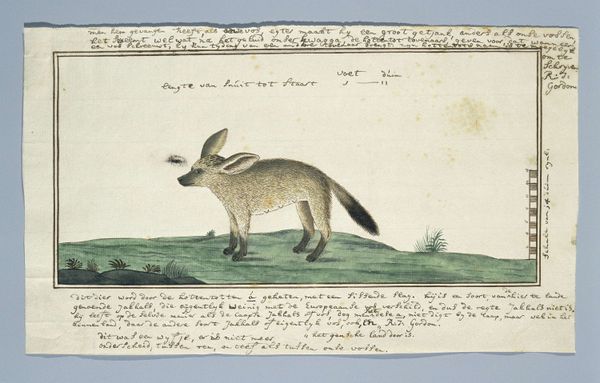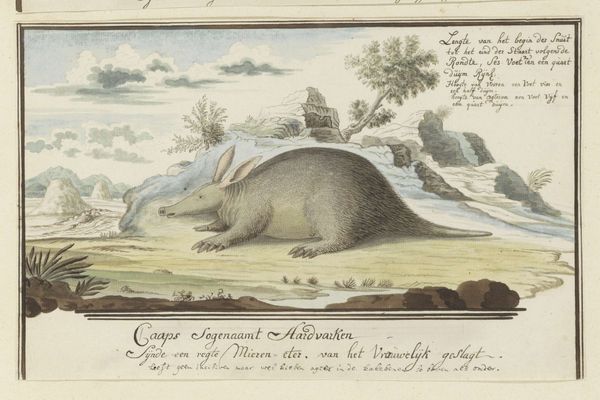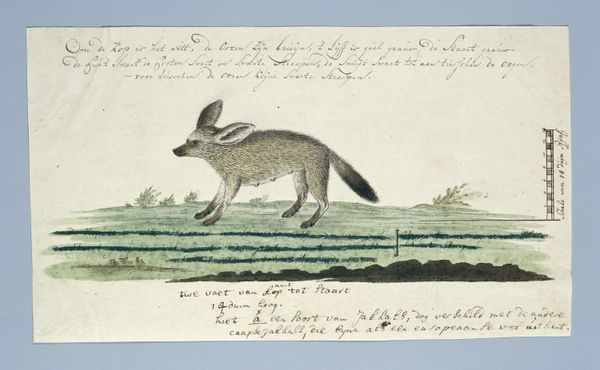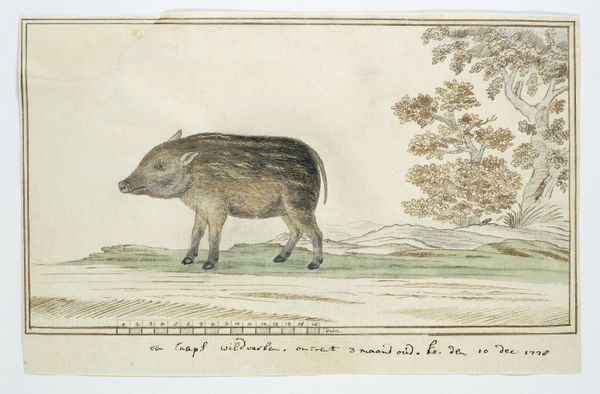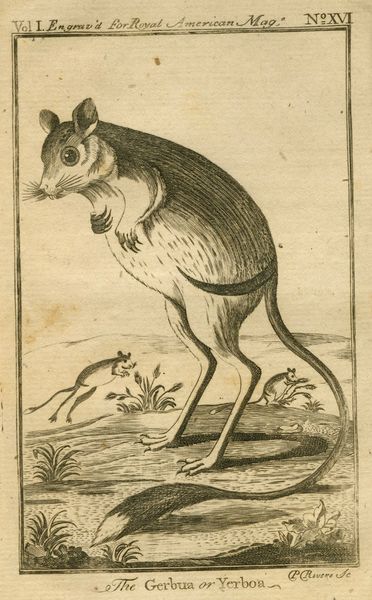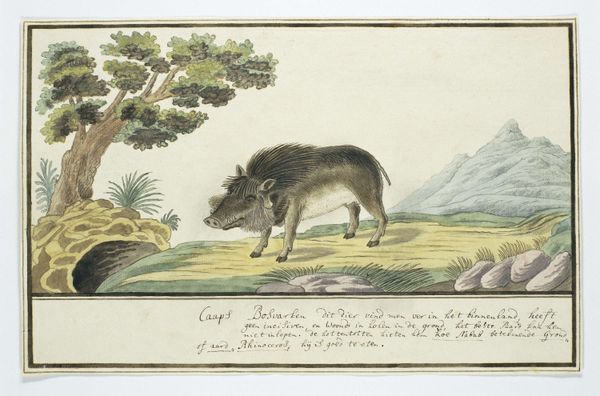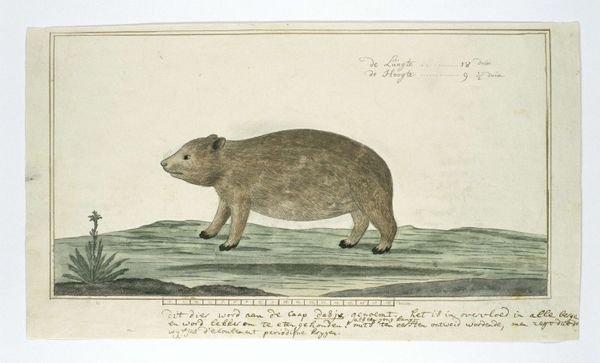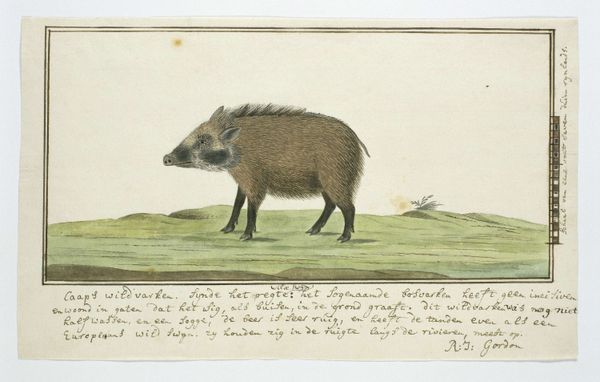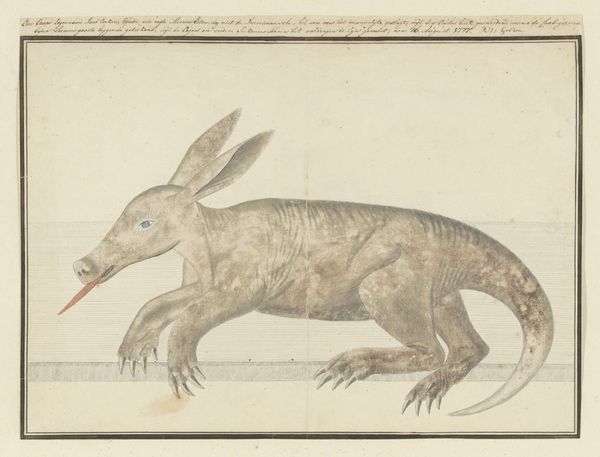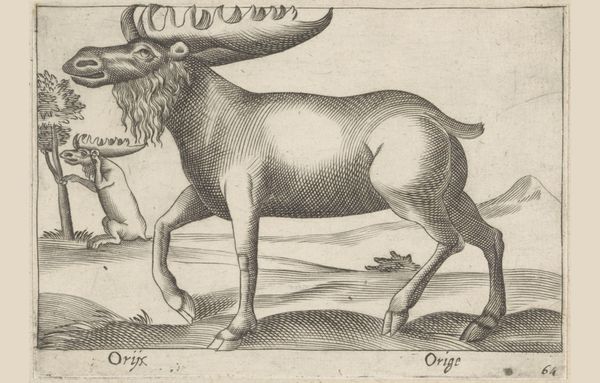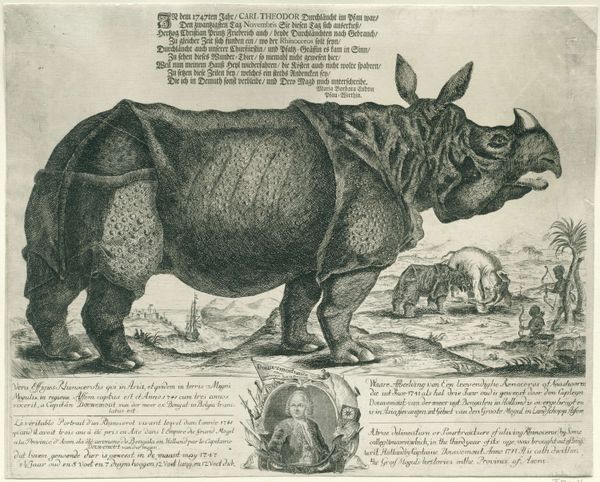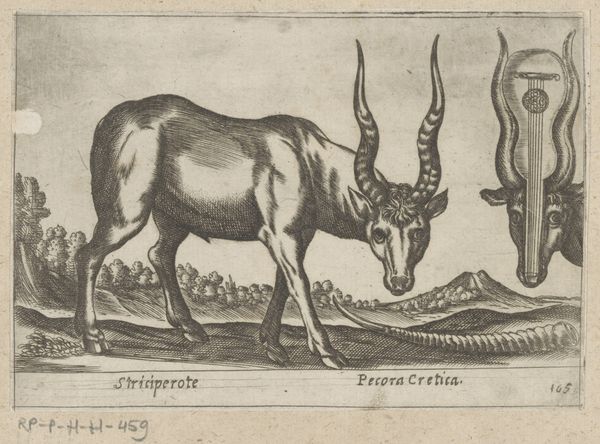
drawing, watercolor, ink
#
portrait
#
african-art
#
drawing
#
animal
#
watercolor
#
ink
#
coloured pencil
#
watercolour illustration
#
genre-painting
#
realism
Dimensions: height 660 mm, width 480 mm, height 232 mm, width 353 mm, height 194 mm, width 353 mm
Copyright: Rijks Museum: Open Domain
Curator: Looking at this illustration, I am immediately struck by its stillness, its almost clinical approach to depicting this animal in its habitat. Editor: And I feel an overwhelming sense of detachment. The floating limbs in the upper corners, the sterile background... it’s a peculiar way to represent wildlife. Curator: Indeed. We’re viewing “Orycteropus afer (Aardvark),” a work possibly created between 1777 and 1786 by Robert Jacob Gordon. The artwork is rendered with ink and watercolor, complemented by colored pencil, demonstrating a fascinating blend of artistic techniques. Editor: Robert Jacob Gordon—I know that name from discussions about colonial narratives in natural history illustrations. This feels less like a celebration of biodiversity and more like an assertion of control, an almost anatomical study, wouldn't you agree? Curator: It certainly echoes that tension. The detailed rendering aligns with the Enlightenment’s desire to classify and understand the natural world. This artwork serves as documentation, yet, it also participates in the construction of a specific vision. Editor: How the aardvark is centered in the composition definitely adds weight. We are made to concentrate on it while the handwritten notes offer colonial taxonomy details, underscoring a relationship built on observation and assumed dominance. How are genre-painting themes fitting in here? Curator: A theme of genre-painting comes from the choice to portray the aardvark in its natural environment, a setting constructed as objective truth, which serves the genre's purposes. What’s fascinating to me is how Gordon blends scientific precision with an artistic sensibility. He isn't just documenting; he's also interpreting. Editor: Absolutely. It reminds us that even ostensibly objective depictions are infused with ideology. Looking at the social dynamics of the period, it invites considerations on power structures in observation. I see in this image an early example of how visual culture and natural history come to influence socio-political perceptions. Curator: A powerful reminder that art is rarely just what we see on the surface. This drawing unveils more profound layers of colonial influence on our perception of the world. Editor: And how deeply embedded notions of science and identity play a key role in artistic representation. This drawing makes clear the relationship between observation, knowledge, and control.
Comments
No comments
Be the first to comment and join the conversation on the ultimate creative platform.
